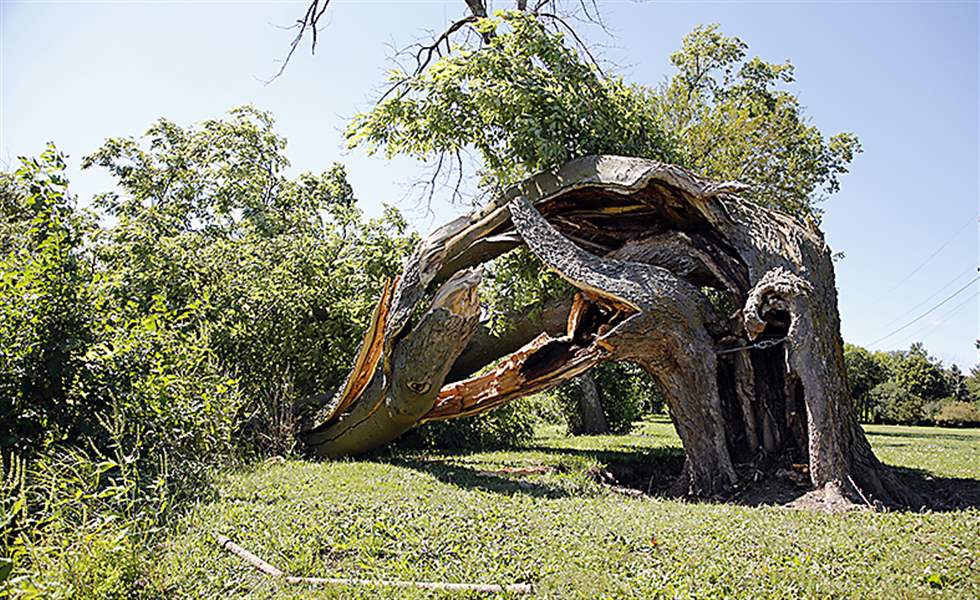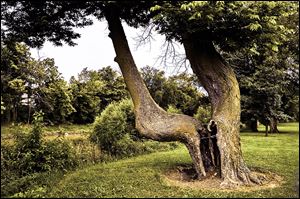
Tree downed by storm may be trail marker from 1800s
9/2/2013
A hackberry tree, believed to be about 200 years old and used by Native Americans in the 1800s to mark their trail, was blown over by a storm on Friday at Trail Marker Park in Woodville.
THE BLADE/JEREMY WADSWORTH
Buy This Image

A hackberry tree, believed to be about 200 years old and used by Native Americans in the 1800s to mark their trail, was blown over by a storm on Friday at Trail Marker Park in Woodville.
WOODVILLE — Now that a tree at the center of a local legend has been bested by Mother Nature, officials might be able to say with more certainty if its lore holds up.
A hackberry tree in Trail Marker Park, said to be about 200 years old and used by Native Americans to mark their trail along the Portage River, toppled Friday during a strong storm, said Michael O’Connor, president of the Woodville Historical Society.
There’s really been no way to determine how old the tree is, but Mayor Richard Harman said now is the right time to cut up the tree, count the rings to determine its age, and find out whether the trail marker tale is fact or fiction. To get a more accurate age, samples of the tree could wind up with the state’s Division of Forestry.
If the tree was, in fact, a trail marker, it would have to have sprouted before Native Americans were gone from the region, which was in the late 1810s or early 1820s, Mr. O’Connor said. Rumors about town, though, suggest that a flood in the early 1900s destroyed everything. If true, it would mean there’s no chance this tree was actually a marker.
In 1968, during a communitywide initiative to clean up the banks of the river, someone “discovered” the tree and its unusual L-shape. A local man with a vast knowledge of Native American culture was brought in and determined that there was a good chance the tree was used as a trail marker.
The park, previously known as Riverside Park, was renamed Trail Marker Park.

It's believed Native Americans used this hackberry tree, shown before Friday's storm, to note a shallow part of the river along their trail.
To create the marker, Native Americans would have tied down tree limbs on the then-young hackberry tree to note a shallow part of the river along their trail.
It’s nearly impossible to say with absolute certainty where this trail started and stopped, but Mr. O’Connor said it appears to be between Upper Sandusky and Detroit.
Over the years, efforts were made to maintain the integrity of the badly worn tree, like using bolts to keep its wide, hollowed trunk from splitting further.
Mr. O’Connor said the marker is believed to be the only one in northwest Ohio.
This is not the first time the tree has been the buzz about town. Several years ago, a group of inmates from a Fremont detention center cleaning up the river bank cut off one of the tree limbs.
“That was controversial,” Mr. Harman said.
Contact Taylor Dungjen at tdungjen@theblade.com, or 419-724-6054, or on Twitter @taylordungjen.